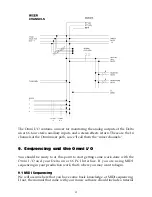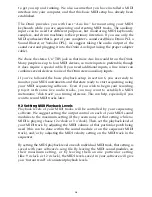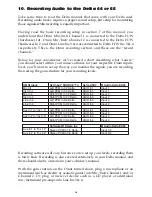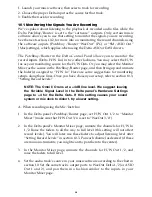
4.
Gain Controls: The position of these rotary gain controls will determine the
amount of microphone or instrument pre-amp gain being applied to the
Omni pre-amps (Mic/Instr Inputs 1 & 2). The “U” marking shows a unity
gain setting for the high impedance input when the Pad switch is engaged.
5.
Channels 1 – 4 Effects Sends: The position of this control determines the
amount of level that is sent to the mono effects bus (FX Send) within the
Omni mixer circuitry. Effect Sends 1 through 4 are used to add effects
processing to the Delta’s H/W Outs 1 through 4.
6.
Headphone Controls: The position of these controls determines the amount
of listening level that is sent to the respective headphone jack.
7.
Headphone Output Jacks: These TRS jacks accept a TRS plugs from standard
stereo headphones.
8.
Signal/Clip L&R LEDs: These LEDs show the output level of the Omni
mixer. The signals shown are pre-monitor and pre-headphone level controls,
and therefore are unaffected by these settings. The “Signal” LED shows
signal present, while the “Clip” LED begins to light at 2dB below clipping.
9.
Monitor Control: The position of this control determines the amount of
listening level that is sent to the L&R Monitor Out jacks for control room
listening levels.
10. Phantom LED: When lit, this LED indicates that the “Phantom Switch” is
engaged and that phantom power is being sent to the XLR jacks.
11. Power Switch and Power LED: Power is enabled on the Omni when the
power switch is pressed and locked to the in position. Providing that the
proper 9v AC power supply is applied to the Omni, the power LED will
light. Power is turned off when the switch is in the out position.
5




















